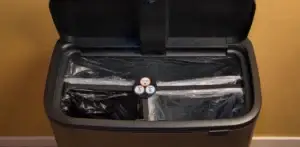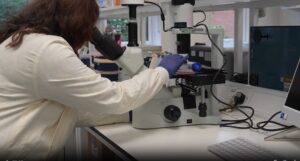TRNL20220406027
A Dutch research institute is looking for aerosol sensor technologies to detect harmful pesticide concentrations in vehicle cabins.
A Dutch research institute is partner of an international consortium, creating an open innovation platform and network in which large enterprises can set out technical challenges for SMEs and start-ups to propose innovative solutions to. One of these technology challenges concerns identification of sensor technologies to detect aerosols and distinguish between harmful pesticides and regular aerosols.
Due to the health risks of pesticide components, handling of plant protection products (PPP) requires utmost caution. Spraying of PPP using tractors and other agricultural vehicles is of special interest, due to strict regulation of maximum allowable concentrations for tractor operators.
When spraying plant protection products (PPP), pesticide aerosols can get into the tractor cabin via the ventilation system, e.g. due to low grade or improperly maintained filter elements, open or poorly sealed windows, doors and gaps as well as through the contaminated user him/herself. No warning occurs in case of increased concentrations of harmful pesticides in the cabin because of a lack of suitable reliable, small, and affordable sensors.
The new sensor will be an essential part of in-cabin air quality monitoring systems, giving peace of mind to the tractor operator, controlling the operating mode of the ventilation system, detecting the status of the cabin air filter and providing maintenance recommendations for the air filter system.
Solutions are expected to have been validated in laboratory environment (technology readiness level 4) but may need further development to achieve a full fit with real-world technical requirements. Further development of a successful proof of concept will be supported by the challenge owner, in return for exclusivity for the challenge owner’s intended application. SMEs or start-ups are sought via a research and development agreement.
At present, analytical devices for pesticide detection are only available in a laboratory scale and are very expensive. Handheld particle counters cannot distinguish between regular aerosols (dust, water) and harmful pesticide aerosols. Gas sensors are limited to the detection of molecular contaminations, while according to recent studies the biggest health threat posed by PPP spraying are inhalable aerosol droplets
Another challenge is the large number of PPP for different areas of application, e.g. herbicides, insecticides, fungicides, bactericides; with different ingredients and chemical formulations.
The main task for a novel sensor is the reliable detection of a wide range of pesticides in an in-cabin requirement: focusing on aerosol-borne pesticides, dealing with low concentrations and withstand harsh real-world conditions. An indication whether critical pesticide concentrations are detected or not is sufficient, there is no need for a detailed analysis of pesticide compositions
There is no restriction or limitation on the technology used for the sensor.
The sensor has to be able to detect aerosols in the typical size and concentration ranges of agricultural vehicle cabin environments. A differentiation between regular, harmless aerosol ingredients (water, dust) and harmful pesticide compounds is required. An indication whether critical pesticide concentrations are detected or not is sufficient, there is no need for a detailed analysis of pesticide compositions. However, an output of the aerosol concentration value would be advantageous.
Maximum installation space is 150x150x150 mm³. Standard communication protocols for sensor data are beneficial. Operation conditions are 5 – 50 °C and 0 – 90 % rh. Vibrational and mechanical stress and regular pollution has to be considered. Low maintenance and calibration efforts of the sensor are required. Minimum lifetime requirement is 5 years.
The main evaluation criterion is the proof of suitability of the concept for the detection of selected, representative pesticide aerosols.
Further evaluation criteria:
• How close to real-world conditions were the test conditions?
• How big is the range of detectable compounds, particle sizes and concentrations?
• What is the accuracy of the detection?
• How easy is the scalability of the proof-of-concept?
• How difficult is the interconnection with standard bus systems?
• How robust and easy to operate is the solution?
• How affordable is the technology for a potential serial use?
• Integrated carbon, water footprint and energy balance of the plant
Since this technology request is an innovation challenge and is published on an open innovation platform all types of IPR Status can be considered.
This technology request is part of an innovation challenge and is published on an open innovation platform from 7 March and will close on 19 April. If an organization does express interest, it will be guided through this open innovation platform, where it can engage with the challenge owner and propose a solution. Mind that posts on this platform are not confidential.
Shortlisted proposers will have an opportunity to pitch their proposal directly to the challenge owner, who will then select the SME with whom it would like to cooperate in the development of the solution. Once the challenge is closed, the profile will be closed and EOIs will be replied to.
The partner is expected to propose a solution to the challenge, including a plan for technical and/or commercial development. The winning partner will be invited to develop their solution together with the challenge owner. The collaborative project is expected to last up to 6 months; there is no limit to the size of the project but the winning partner will receive €10k to cover costs of the project (plus innovation vouchers to spend on support from the technology centre(s).
The challenge owner is expecting to create a proof-of-concept jointly with the winning proposer, using a real cabin environment and (at least close to) real word operating conditions. Further development steps of the concept will be supported by the challenge owner, provided that exclusivity for the intended application is granted. Other potential application fields besides vehicle cabins can be pursued further by the SME. The market readiness (start of production) of a commercial solution is expected in 2-3 years.
Contact for more information:
Email: twjan.tan@rvo.nl



